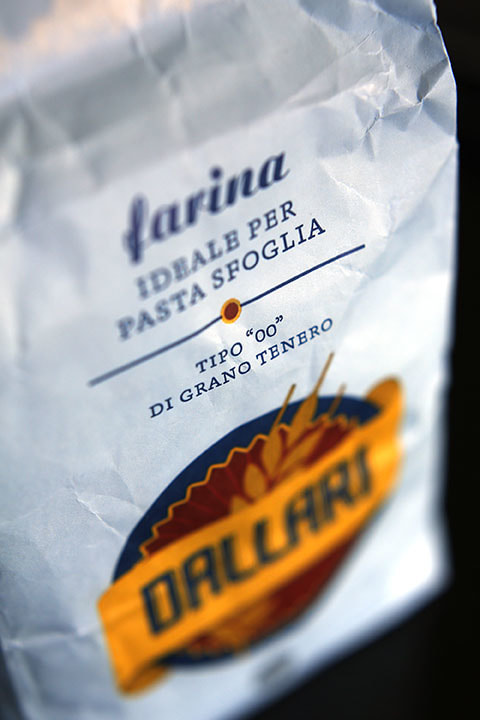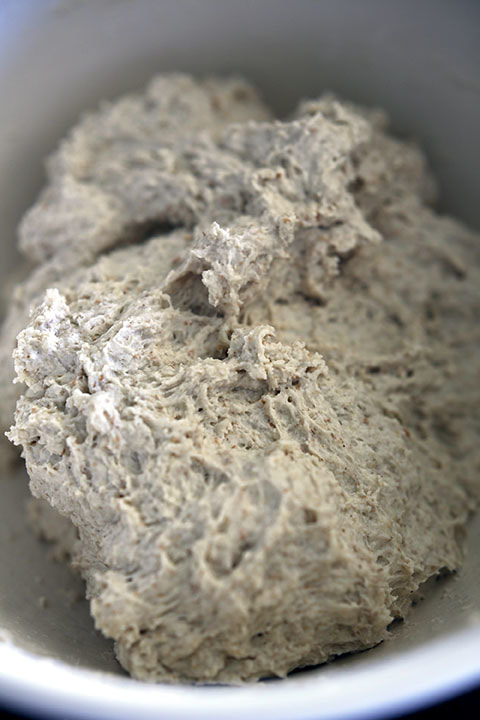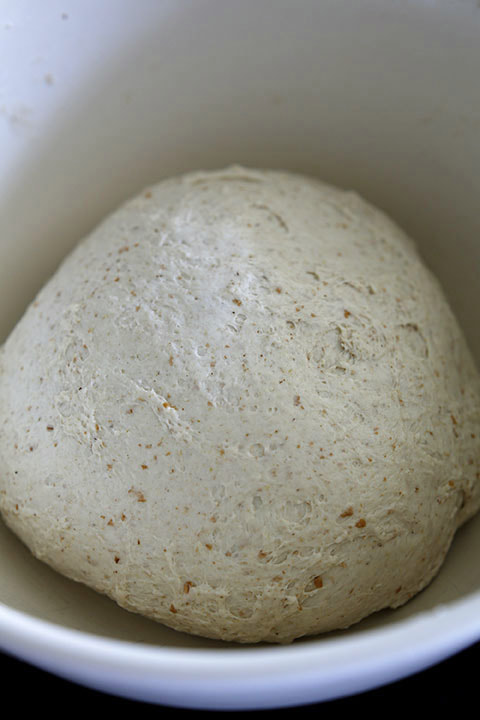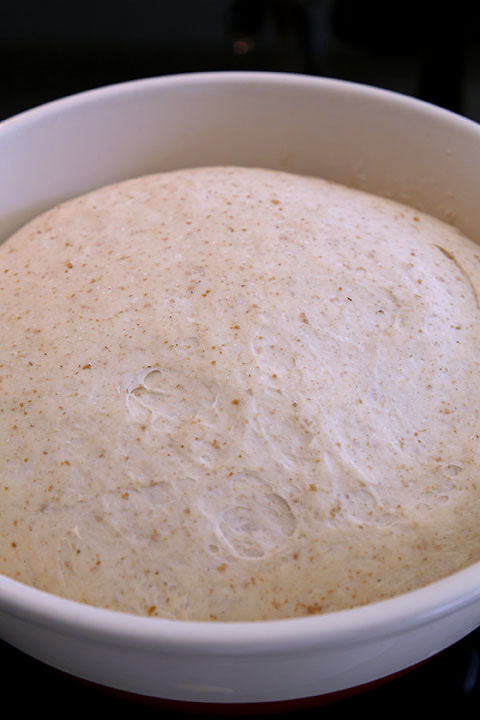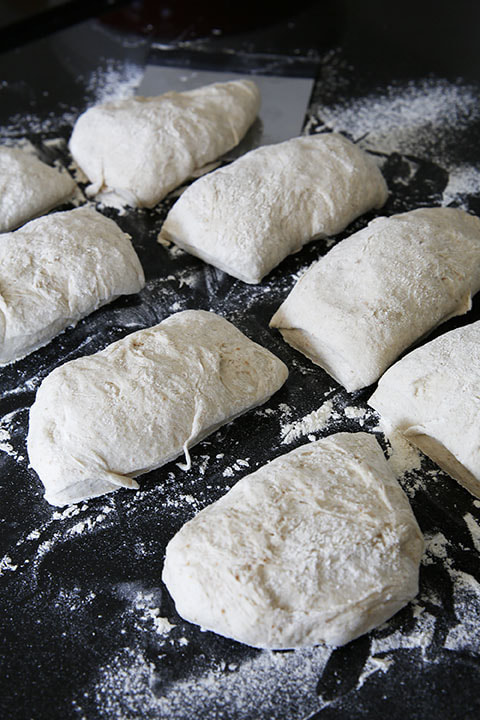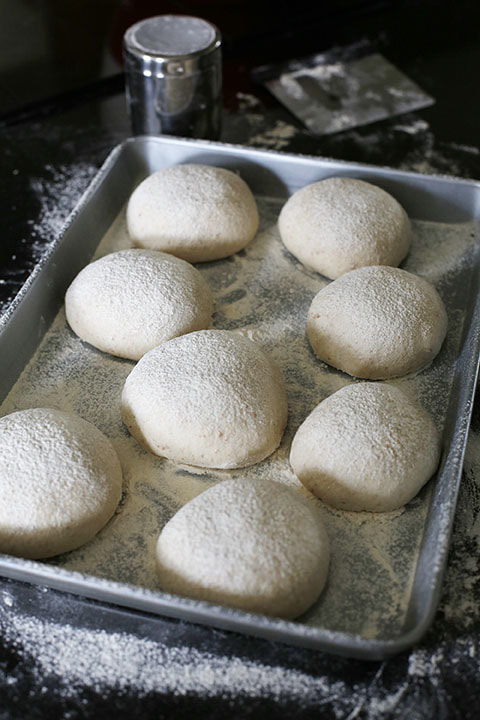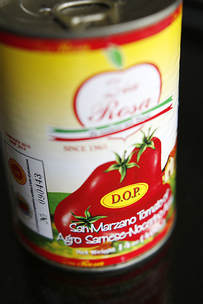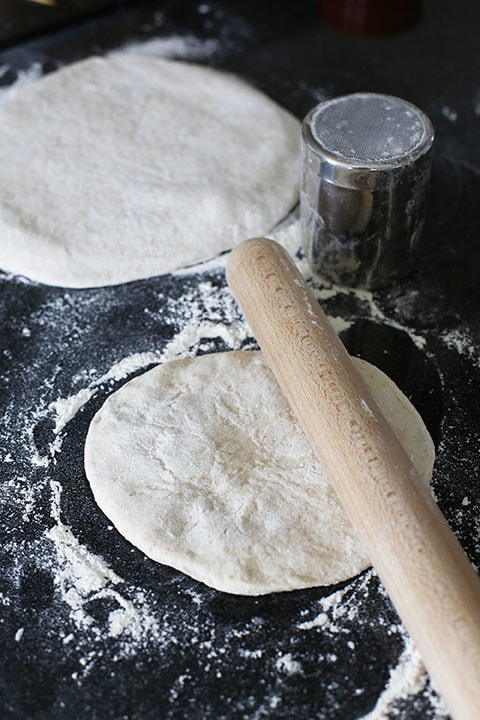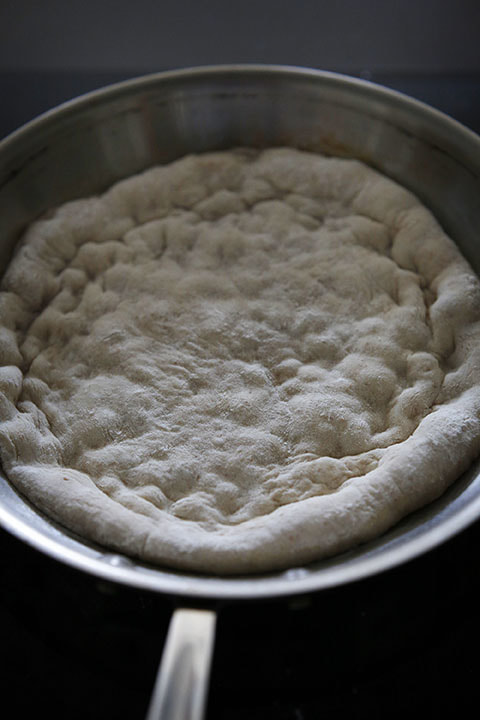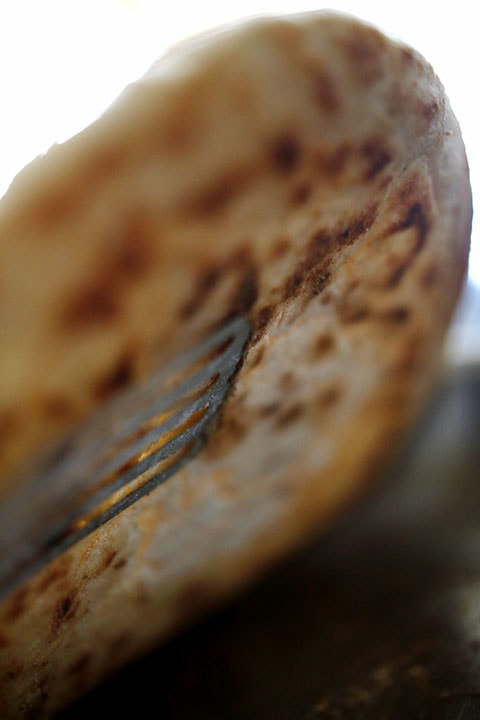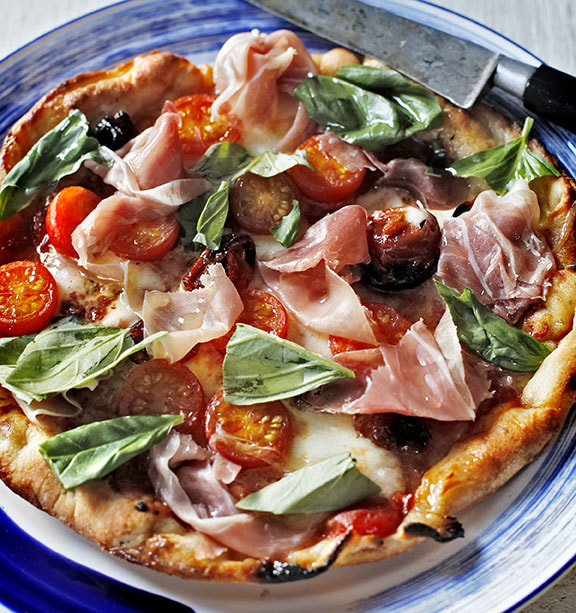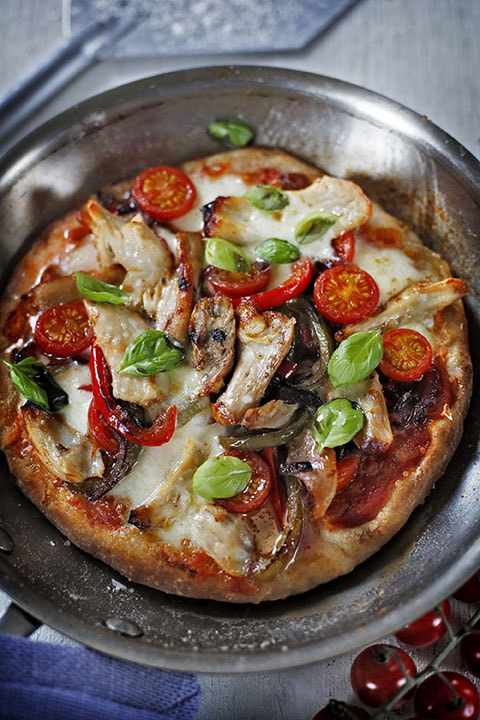
I could bore you all for hours talking about pizza. Neapolitan, Roman, Chicago, New York, Deep Dish, Thin, Bianco...
I love making, eating (and reading) about pizza and woe betide any one within earshot when I start talking about the subject.
Cooking your own home made pizza is a revelation which will make you think twice about picking up the phone and ordering a loaded pepperoni with extra anchovies.
If you have ever tried to recreate an authentic Neapolitan pizza in your own kitchen, you'll know how difficult it is.
The thin base, slightly charred and crisp, yet soft and chewy to eat, with an ever-so-small rim to keep the topping in place.
It's the intense heat of between 350℃ and 550℃ that helps to do this so unless you're lucky enough to have a wood-fired pizza oven in your back garden, and with domestic ovens managing around a max of 250℃ on average, this pizza Nirvana is but a dream for most of us.
That’s not to say you can't cook pizzas in your home oven, it’s just that they don't have that authentic taste and look.
But I wanted to share with you a great way of coming somewhere close to pizza heaven. And it’s all down to the humble frying pan.
By cooking the pizza base in your frying pan first, where you can generate a much higher heat than your domestic oven, you can get that crisp, charred texture similar to sliding it onto the floor of a wood fired stone pizza oven.
Then all you do is add the toppings of your choice and place under a very hot grill for a minute or two and Eccoti! an (almost) authentic pizza.
I love making, eating (and reading) about pizza and woe betide any one within earshot when I start talking about the subject.
Cooking your own home made pizza is a revelation which will make you think twice about picking up the phone and ordering a loaded pepperoni with extra anchovies.
If you have ever tried to recreate an authentic Neapolitan pizza in your own kitchen, you'll know how difficult it is.
The thin base, slightly charred and crisp, yet soft and chewy to eat, with an ever-so-small rim to keep the topping in place.
It's the intense heat of between 350℃ and 550℃ that helps to do this so unless you're lucky enough to have a wood-fired pizza oven in your back garden, and with domestic ovens managing around a max of 250℃ on average, this pizza Nirvana is but a dream for most of us.
That’s not to say you can't cook pizzas in your home oven, it’s just that they don't have that authentic taste and look.
But I wanted to share with you a great way of coming somewhere close to pizza heaven. And it’s all down to the humble frying pan.
By cooking the pizza base in your frying pan first, where you can generate a much higher heat than your domestic oven, you can get that crisp, charred texture similar to sliding it onto the floor of a wood fired stone pizza oven.
Then all you do is add the toppings of your choice and place under a very hot grill for a minute or two and Eccoti! an (almost) authentic pizza.
|
Pizza Dough 1kg ‘00’ flour (fine white Italian flour) also called pasta flour and widely available 20g fine salt 10g fast action yeast 600ml tepid water Put all ingredients in a large bowl and mix well together using your hands coated with a little olive oil to prevent sticking. It will look a shaggy mess but just cover it and leave the dough to relax and absorb the liquid while you make yourself a cup of tea - about 15 minutes Then, rubbing your hands with olive oil again, knead for about 10-20 seconds only before covering and leaving for 10 minutes. Repeat this another 2 times, making a total of three separate kneads and 10 minute rests, when the dough should look smooth and slightly puffy. Give a quick final knead, cover and leave at room temperature for 3-4 hours until about doubled in size. You can put the dough, covered, in the fridge until the next day until you are ready to use it which will give it an even better flavour, but remember to let it come to room temperature before dividing into pizza balls. Cut the dough into 8 pieces (approx 200g each) or 6 pieces if you want a bigger pizza. Form the dough pieces into balls, sprinkle well with flour, then cover until ready to use within the next hour Again, the dough balls will keep covered in the fridge for a few hours until you need them. (If you make too many, you can pop them in a plastic bag and keep in the freezer for a month or three. When you fancy a pizza just thaw overnight in the fridge, bring to room temperature and you have pizza on demand). Now it’s time to make a tomato sauce. I know you can buy jars of passata and ‘pizza’ sauce but why do it when this is so quick and ten times better. Tomato Sauce 1 tin good quality tomatoes (preferably San Marzano - see foodie chat) ½ tsp salt plus a grind of black pepper ½ tsp sugar ½ tsp good quality red wine vinegar Put everything into a saucepan and simmer until thick and spreadable. This may take 10-15 minutes but the important thing is not to have a thin, watery sauce. Taste and adjust if necessary. When you are ready to make your pizza, knock out the air from a ball of dough on a flat surface and with plenty of flour to prevent sticking, use your hands and fingers to spread out as thin as you like, keeping a small ridge around the edge and trying to keep to a circle that will fit in your frying pan. You can also use a rolling pin to do this but you won’t have a raised edge/crust. Heat your frying pan to hot, but not smoking, and add a little olive oil. Drop in the pizza base and cook for about 3 minutes, pressing down the edges and on any bubbles that rise up. Lift up the edge of the pizza to check that it is golden and crispy. Add your topping, drizzle with olive oil and whack under a very hot grill until the topping has started to bubble. If your frying pan won’t go under a searingly hot grill, just slide the pizza base onto a baking sheet on carry on from there. Toppings can be whatever you fancy. Try a classic Margheritta of tomato sauce, mozzarella, fresh cherry tomatoes and basil, but put the fresh basil on after taking out from under the grill, otherwise it will burn. Drizzle with olive oil. And if you hanker for some meat, just tear some pieces of good Parma Ham and lay over the top before serving. (see photo) If you dare be different and non-traditional, try a pizza without tomato sauce. Spread the base with some seasoned creme fraiche or marscapone cheese, then top with some finely sliced red chilli and a handful of raw king prawns. Sprinkle with some grated parmesan, drizzle with olive oil and grill for a few minutes until bubbling and the prawns are cooked. (I suddenly became very popular with my neighbours after making this one). The other pizza photographed here has tomato sauce, mozzarella, sautéed onions, red peppers, red chilli and barbecued chicken. And fantastic it was too. There are lots of combinations of toppings so just go for it and experiment, but my one bit of advice would is be careful of toppings that have a lot of moisture such as mushrooms as the water can leach out during cooking and give you a soggy topping never mind a soggy bottom. I always sauté mushrooms if I am using them to get rid of as much of their water content as I can. Say Cheese... Fresh mozzarella such as buffalo tastes fantastic and creamy, but holds a lot more moisture than cows milk mozzarella, giving it a softer texture. If using buffalo mozzarella on a pizza it needs to be sliced early and dried on kitchen paper to dry off. It’s a bit more work but worth it for the taste. Alternatively, a good Italian cows milk cheese from say a producer like Galbini (widely available) can be used straight away once drained from its packaging, although personally I would still dry it off. I know ordering or buying a supermarket pizza is really easy, but trust me, once you perfect your own homemade version, you will never go back. And the satisfaction you will get from the admiring comments and looks from your guests is worth all the effort. |
